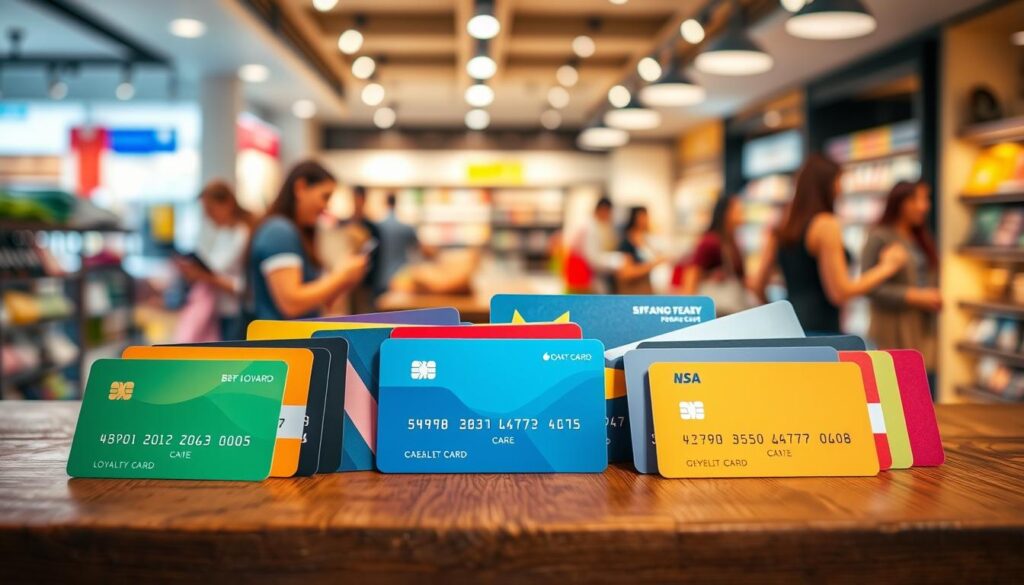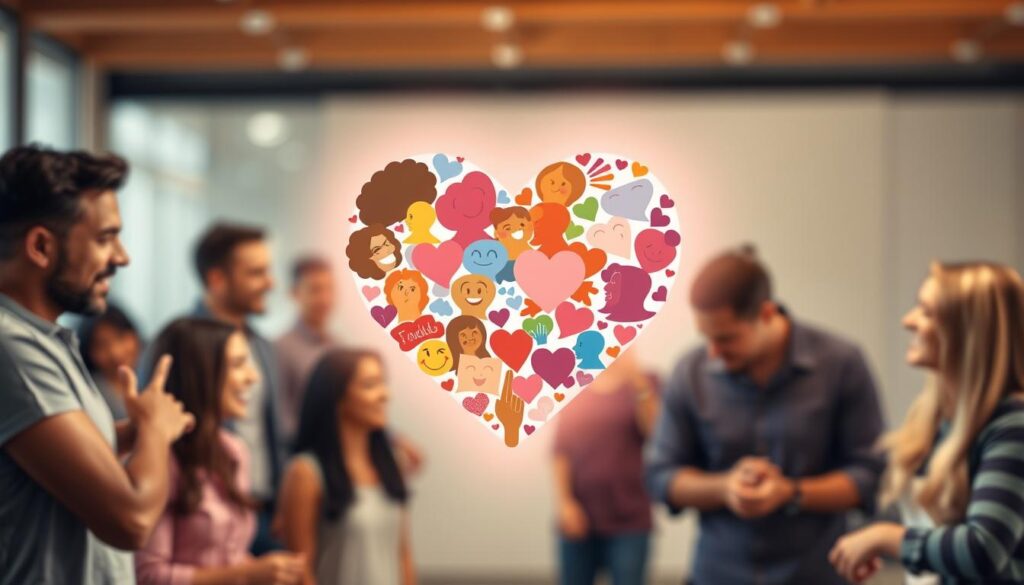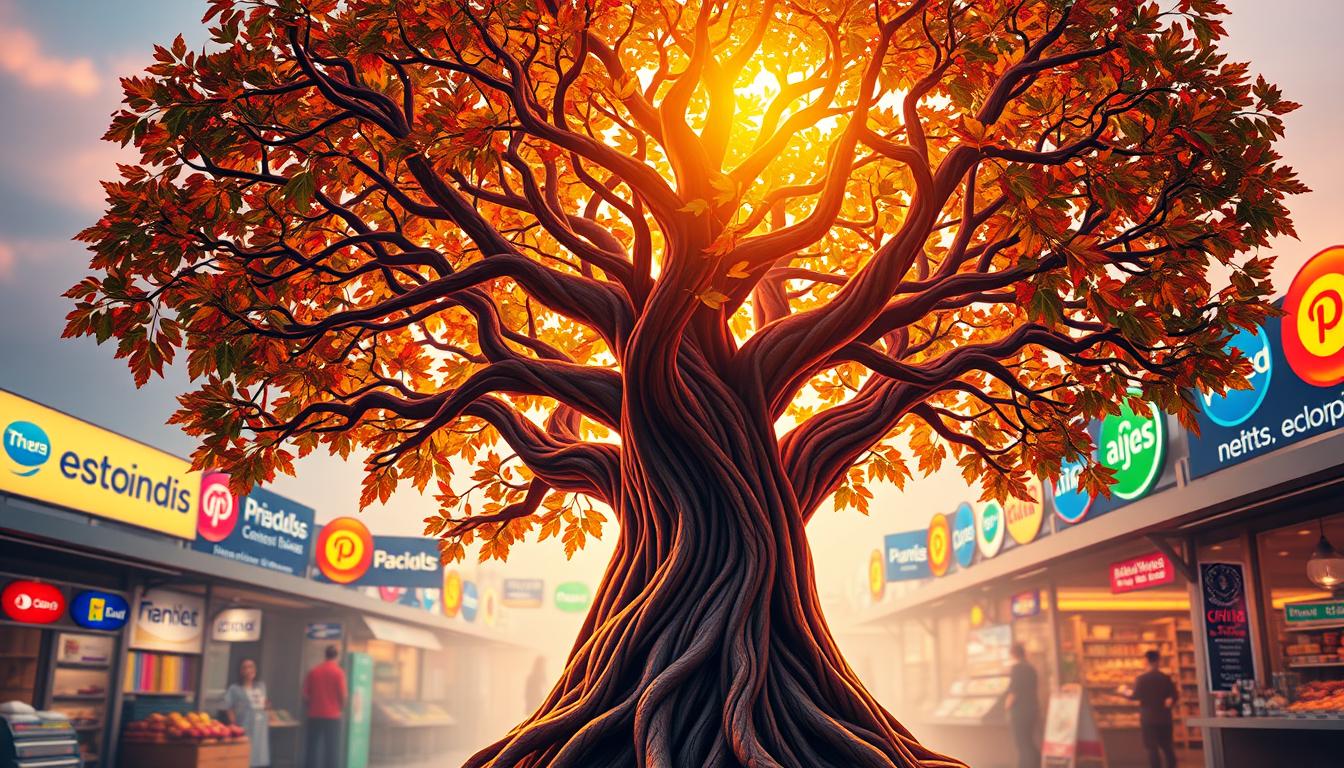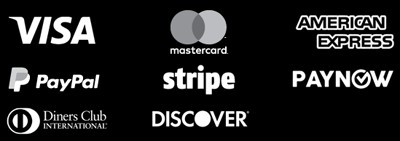In a world filled with many products and offers, building brand loyalty is key. Today’s shoppers look for more than just a good price. They want brands they can trust and that understand their needs.
When you earn their trust, your business can see big benefits. This article will cover the basics of brand loyalty and how to build it. We’ll also share examples of successful brands to help you create your own strategy.
Key Takeaways
- Building brand loyalty is crucial for business success in a crowded market.
- Customers seek brands they can trust and that provide exceptional customer experiences.
- Fostering brand loyalty can lead to increased profitability, customer advocacy, and brand growth.
- Strategies for building brand loyalty include providing excellent customer service, finding a unique brand voice, utilizing loyalty programs, and creating a strong brand community.
- Emotional branding and storytelling are powerful tools for forging deep connections with customers.
What is Brand Loyalty?
Brand loyalty means a customer always chooses the same brand, even when others are available. This loyalty comes from the value and great experiences a brand offers. On the other hand,
brand affinity
is about the emotional bond between a customer’s values and a brand’s values.
Brand loyalty is about what customers do, while brand affinity is about how they feel. Both are key to strong relationships between brands and customers. Brands with loyal customers grow faster and make more money than others.
- 65% of revenue in most companies comes from repeat business with existing clients.
- Existing customers loyal to brands purchase 90% more frequently than new customers.
- Brand-loyal segments are less expensive to maintain than marketing to attract new customers.
Knowing the difference between brand loyalty and brand affinity helps companies create stronger bonds with their customers.
“Brand loyalty is the most important asset a company can have.” – Lori Senecal, former Global CEO of CP+B
Why Brand Loyalty Matters
In today’s competitive market, brand loyalty is key. The 2023 State of Social Media Report shows leaders focus on building loyalty. It’s essential for long-term success and profit.
Brand loyalty keeps your best customers from leaving. Studies reveal loyal customers buy more and try new products. This is crucial for staying ahead in the market.
Brand loyalty also boosts business growth. Companies with loyal customers grow faster and earn more. Loyal customers spread the word, helping your brand grow.
As competition rises, loyalty becomes even more important. Investing in customer loyalty helps brands succeed. It helps them stay strong, even when things get tough.
Five Characteristics of Brand Loyalty
Brand loyalty is complex, with five key traits that shape customer behavior. Knowing these traits is vital for businesses aiming to build lasting, profitable customer relationships.
Emotional Connection
Emotional branding is key in building loyalty. Customers who bond with a brand are more likely to stay loyal. They might even go out of their way to buy from their favorite brands. Neuroscientists say emotions play a big role in our buying habits, with 95% of purchases made without thinking.
Resistance to Competition
Brand loyalists resist competitive offers, seeing their preferred brand as better. This is a key sign of true loyalty. In fact, 37.7% of people say they choose one product over another, even if it costs more.
Positive Word-of-Mouth
Loyal customers often share their positive experiences with others. This word-of-mouth and social media buzz is a powerful way to grow. It shows that 80% of customers value the experience they have with a brand as much as the product itself.
Tolerance for Price Changes
Brand loyalists are more likely to stay with their favorite brands even when prices change. This is valuable, as 67% of customers are willing to pay more for a great experience.
Repeat Purchases
The best measure of loyalty is how often customers come back. Data shows 67.8% of people see loyalty in repeat purchases. Companies that keep their customers can see a big boost in profits, with a 25-95% increase by just reducing customer loss by 5%.
| Characteristic | Definition | Percentage of Respondents |
|---|---|---|
| Repeat Purchase | Customers define brand loyalty as a repeat purchase | 67.8% |
| Emotional Connection | Customers define brand loyalty as “love” for the product | 39.5% |
| Resistance to Competition | Customers define brand loyalty as a preference for one product over another despite the price | 37.7% |
By grasping these five loyalty traits, businesses can craft strategies to build stronger, more meaningful customer bonds. This leads to long-term growth and profitability.
How to Build Brand Loyalty
Building strong brand loyalty is key for businesses wanting a loyal customer base. The Pareto Principle shows 80% of future revenue comes from 20% of current customers. This highlights the need to keep and grow loyal customers.
Using different tactics can help brands win their audience’s loyalty. One great way is to offer best-in-class customer service. Quick and personalized help builds trust and a bond with the brand.
Another smart move is to find a unique brand voice and story. Working with similar businesses and forming partnerships can grow your audience. Also, listening to customer feedback and using it in your brand’s message shows you care about their happiness.
Customer rewards programs are also a strong loyalty builder. Forbes says 90% of companies have loyalty programs, with over 3.3 billion members in the U.S. alone. Offering special perks and benefits encourages customers to come back and feel part of something.
Lastly, building a brand community is a top way to keep customers loyal. By letting customers interact with the brand and each other, you create a sense of belonging. This leads to more loyalty and repeat business.
By using these strategies, businesses can build a loyal customer base. This loyal base is crucial for long-term success and growth.
| Strategies to Build Brand Loyalty | Benefits |
|---|---|
| Provide Best-in-Class Customer Service | Fosters trust, connection, and repeat business |
| Find a Unique Brand Voice and Story | Expands reach, cultivates community, and demonstrates commitment to customers |
| Implement Customer Rewards Programs | Incentivizes repeat business and creates a sense of belonging |
| Build a Brand Community | Fosters shared identity, advocacy, and long-term loyalty |
“Consistently delivering high-quality products and services can lead to increased customer loyalty. Providing value that resonates with users can drive brand loyalty, going beyond minimal discounts or offers.”
Provide Best-in-Class Customer Service
Exceptional customer service is key to building strong brand loyalty. Studies show that leaders in customer experience grow their revenue more than twice as fast as others. By having a clear customer service plan that uses social media, you can build trust and keep customers coming back.
Putting customers first is essential. Using tools like Sprout Social’s Smart Inbox helps your team answer questions fast on various platforms. This leads to happy customer experiences and keeps customers loyal. Also, making interactions personal and memorable can greatly improve customer satisfaction and loyalty.
It’s important to track how your customer service affects your brand. Look at Time in Queue, Ticket Volume, and how often you solve problems on the first try. By always trying to do better, you can stand out from the competition.
“3 out of 5 customers say good customer service is necessary for brand loyalty.”
Top-notch customer service does more than just keep customers happy. It boosts brand loyalty, gets more referrals, increases revenue, and gives you a lasting edge over competitors. By focusing on what customers need and want, businesses can build strong relationships and achieve lasting success.
Find Your Brand Voice and Story
Finding a unique brand voice is key to winning your audience’s heart. Your brand’s personality should shine through in all your marketing. This includes social media and customer service, making your brand unforgettable.
Brands like Gymshark have succeeded by being friendly and relatable on social media. They connect with people through humor and shared interests. HubSpot’s social media team saw a huge jump in engagement on LinkedIn by using their brand voice.
To find your brand’s voice, think about your core values and what makes you unique. Research what your audience likes and how they communicate. Google Analytics can help you see what content and tone work best.
Make a brand voice template with 3-5 key traits, like being approachable or conversational. This helps keep your content consistent. Working with content marketing agencies can also help you craft a strong brand voice.
“Developing a strong brand voice is essential for emotional branding and building lasting brand loyalty. It allows you to create a meaningful, personal connection with your audience and stand out in a crowded market.”
By discovering your brand’s unique voice and storytelling, you’ll boost your content marketing. You’ll also build a deeper brand personality that your loyal customers will love.
Use Rewards Programs
Building customer loyalty is key for any business’s success. A great way to do this is by starting a rewards program. Customer loyalty programs give repeat customers special perks, making them want to come back.
Starbucks is a great example of a successful rewards program. Their customer loyalty program lets customers earn points for free items. This makes customers feel valued and keeps them coming back.
Even simple rewards, like punch cards for a free item, can help. These programs offer customer incentives that keep customers loyal. They make customers feel like they belong.
The Merkle’s 2024 Loyal Barometer Report shows 77% of consumers join up to five customer loyalty programs. Also, 93% of consumers have earned or redeemed a reward in the last six months. This shows how popular and effective these programs are.
Starting a good rewards program can really help a brand. In fact, a strong customer loyalty program can increase customer loyalty by 84%. By giving out valuable rewards, businesses can keep customers coming back for more.

“Loyalty programs, such as the Starbucks Rewards program, demonstrate the effectiveness of retaining customers through interactive offers like exclusive music playlists and order-ahead capabilities.”
| Metric | Statistic |
|---|---|
| Consumers belonging to up to 5 loyalty programs | 77% |
| Consumers who earned or redeemed a reward in the past 6 months | 93% |
| Impact on a consumer’s decision to continue doing business due to a solid loyalty program | 84% |
Build a Brand Community
More people are looking for digital spaces to connect and talk. Brand communities are a big chance for businesses to build customer loyalty. By creating a sense of community, whether online or through events, you can make customers feel closer to your brand.
When customers feel they belong, they stick with your brand. They’re more likely to buy, share, and talk about your brand. This makes your brand more known and loved.
Brand communities show brand loyalty in action. Customers deeply invested in your brand make purchases and share your products. They become your brand’s biggest fans, helping spread the word.
These communities also boost brand awareness. They get customers to engage more, share your content, and become your brand’s ambassadors. This increases your brand’s visibility in the market.
Good brand communities keep customers coming back. They help you understand what your customers want, leading to better messages and customer engagement.
To build a strong brand community, start by knowing your brand’s identity. Set clear goals and choose the right platforms. Always talk to your community to keep things interesting and build strong relationships.
“In 1983, Harley-Davidson was facing extinction, but 25 years later, the company had a top-50 global brand worth $7.8 billion. Harley-Davidson retooled every aspect of its organization to support building and maintaining its brand community, treating all community-related activities as a companywide investment.”
Brand communities have made many brands more loyal and authentic. They’ve also cut down on marketing costs. For example, Vans made a community by letting users help design products.
Great brand communities need the right structure. They focus on personal connections to build lasting bonds. Everyone in the community plays a role, like Mentor or Storyteller, to keep things active and valuable.
Online social networks help brand communities thrive. But, it’s key to use them wisely to keep interactions real and meaningful.
Emotional Branding
Building brand loyalty is key, and emotional branding is a powerful way to do it. It’s about creating a story that speaks to your audience’s heart. This story goes beyond just what your product does.
When brands connect emotionally, people prefer and stick with them. A brand’s emotional connection score (ECS) shows how well it’s doing. It’s about turning happy customers into loyal ones.
Good emotional branding uses brand storytelling that speaks to your audience’s values and dreams. It makes people feel happy, excited, or nostalgic. Being consistent in your message and experience is key to keeping these feelings strong.
“Brands can convert satisfied customers into highly engaged and valuable ones to build long-term loyalty.”
User-generated content helps build emotional bonds and a community around your brand. When customers share their stories, it makes your brand more relatable and memorable.
Take Levi’s 150th anniversary of the 501® jeans as an example. Their campaign used short films to celebrate the jeans’ history and cultural impact. One film showed a man wanting to be buried in his 501® jeans. It shows how powerful emotional branding can be.
Emotional marketing needs to understand what your audience wants and needs. By creating a brand that truly connects with them, you can stand out in a crowded market. This way, you build a loyal fan base that lasts.

Conclusion
Building brand loyalty is key for lasting success in today’s market. By using brand loyalty strategies, companies can get loyal customers. These customers not only keep coming back but also become strong brand advocates.
Investing in these strategies helps businesses stand out. It boosts customer retention and gives them a strong edge over competitors.
Great customer service, a unique brand voice, and rewards programs are important. They help businesses connect deeply with their customers. Using metrics like repeat purchases and Customer Lifetime Value (CLV) helps guide success.
By focusing on brand loyalty, companies can build a loyal customer base. This base not only brings in steady income but also promotes the brand. This can lead to more growth and strengthen the brand’s position in the market.
In short, investing in building brand loyalty can change a business for the better. It’s a step towards lasting, sustainable success.
FAQ
What is brand loyalty?
Brand loyalty means a customer keeps choosing a brand, even when others offer better deals. This loyalty comes from the value the brand gives, like great customer service.
What is the difference between brand loyalty and brand affinity?
Brand affinity is when a customer feels a brand shares their values. Brand loyalty is about the actions customers take with a brand. Brand affinity is about the emotional bond between a customer and a brand.
Why is brand loyalty important?
Brand loyalty keeps your customers from switching to competitors. It acts as a shield against market share loss. Building loyalty is key for long-term success and profit.
What are the five characteristics of brand loyalty?
The five traits of brand loyalty are: feeling an emotional connection, resisting other brands, sharing positive experiences, accepting price changes, and buying again.
How can businesses build brand loyalty?
Businesses can build loyalty by offering top-notch service, finding a unique voice, using rewards programs, and creating a strong community.
Why is customer service important for building brand loyalty?
Good customer service drives loyalty, which boosts a company’s profits. Having a clear service strategy for your audience’s preferred channels is vital.
How can a unique brand voice and story help build brand loyalty?
A unique brand voice makes your company feel relatable. Keeping this voice consistent across all platforms makes your brand stand out and memorable.
What are the benefits of using a rewards program to build brand loyalty?
Rewards programs offer discounts and perks to keep customers coming back. This makes them feel valued and appreciated.
How can building a brand community help with brand loyalty?
Creating a community through forums or events strengthens customer ties to your brand. Feeling part of a group makes customers more loyal and engaged.
What is emotional branding and how can it build brand loyalty?
Emotional branding creates a deep connection by telling compelling stories and being authentic. Sharing values and consistently reinforcing your brand identity builds lasting loyalty.
Resources:
Explore our curated list of recommended resources for printing, design, and free media assets. Whether you need professional printing services, free design templates, or royalty-free photos for your next project, these reliable sites have you covered.1. Printing & Design
- Printing Inc. Description: Singapore-based online printing service offering a variety of print products such as business cards, flyers, brochures, and custom stickers with professional design services.
- Namecards Inc. Description: Specialist in name card printing, providing a wide range of custom designs, finishes, and materials for high-quality business cards.
- Kian Hong Press Description: Established corporate printing company in Singapore, offering solutions for brochures, catalogs, annual reports, and other corporate stationery.
2. Free Design Templates
- Canva Description: Offers a wide range of free and customizable templates for various needs, including presentations, posters, social media, and marketing materials.
- FreePik Description: Provides thousands of free and premium templates for brochures, flyers, business cards, and more, along with editable vector illustrations and graphics.
- Piktochart Description: Focused on data visualization and professional templates for infographics, posters, presentations, and reports, with both free and premium options.
3. Free Royalty-Free Photos
- Pexels Description: Offers high-quality, free stock photos and videos shared by talented creators for commercial and personal use without attribution.
- Unsplash Description: A large collection of beautiful, high-resolution images contributed by photographers worldwide, available for free use in any project.
- Pixabay Description: A community-driven platform offering copyright-free photos, illustrations, and videos for use in any creative project, with no licensing restrictions.






